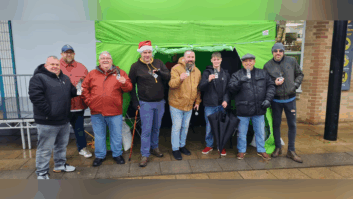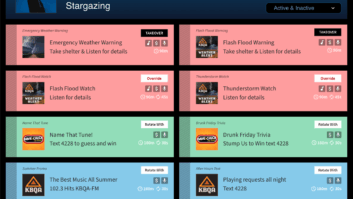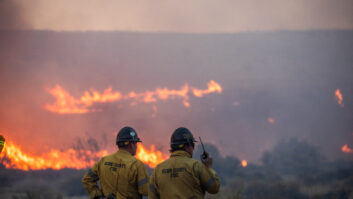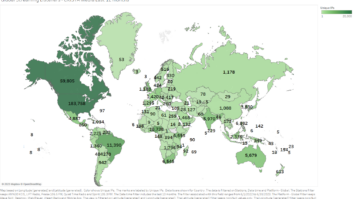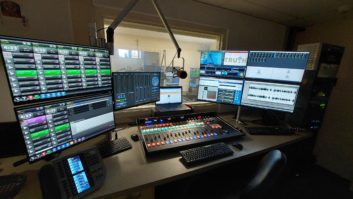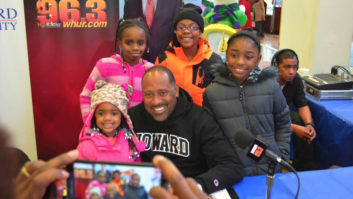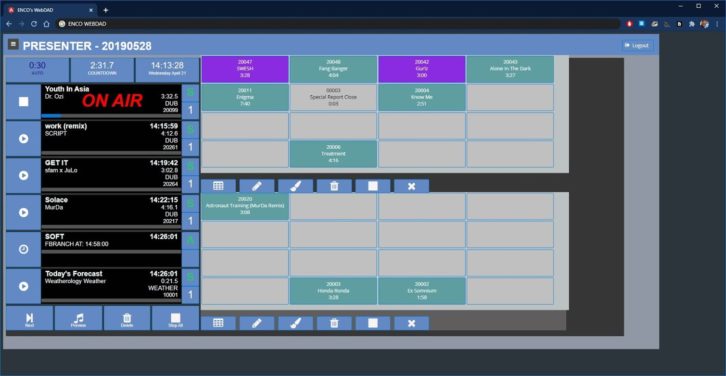
ENCO’s business started with computer-based process control for critical industrial applications in the early 1980s, but it soon focused that technical expertise on broadcasting. In 1991 its first digital audio delivery system, DAD, replaced manual cart systems commonly used to sequence and play audio content.
Bill Bennett is media solutions account manager. This is excerpted from a recent ebook.
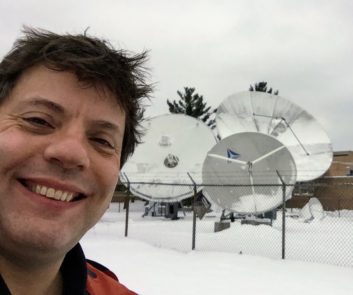
Radio World: How has the pandemic experience changed workflows for your clients?
Bill Bennett: Historically, most radio production has been done in the studio, with someone directly interacting with their DAD system at the station. And over the course of a day, that could be perhaps five to 10 different people needing access to a production or on-air system at different times.
Then suddenly, all these people are working from their homes, but the station can’t have separate physical DAD installations located at each of their homes. That’s one of the examples where WebDAD shines, as it’s a browser-based remote control client, allowing those remote users to connect via VPN back to the main DAD systems at the studio, and keep focused on churning out their content, whether they have a PC or Mac.
RW: Are there new capabilities that have come to the fore?
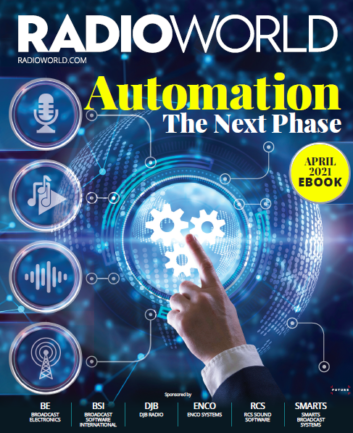
Bennett: ENCO users are finding new ways to work while remote or mobile, with our HTML-5 based mobile automation solution called WebDAD, which allows for native remote control of our DAD automation system over the public Internet via VPN connection. It’s also a great resource when using part-time talent who need only limited access to some systems or only at certain times.
WebDAD allows users to access to the most popular DAD features remotely via Web browser, whether down the hall or across the country, making it a key component for today’s decentralized radio workforce.
It gives them native connectivity and remote control of their DAD system, where they can do things like library and playlist maintenance, change up their content live with array panels, perform voicetracking, upload audio files, edit heads and tails, and more.
RW: What have manufacturers learned that might affect future designs?
Bennett: The customer more than ever is ready to trust the cloud for storage, playout, automation, and for the sharing of audio and video assets, as well as collaborate on shared documents, notes and rundowns.
Pre-COVID, a lot of radio stations still used a more simplified methodology, not wanting or needing to adopt cloud or internet-based solutions. But the pandemic changed everything and they instantly required it.
Many manufacturers, including ENCO, have been saying, “We have been building out this elegant, flexible way to gain native remote access to your playout over a IP network from a simple web browser” And people were already becoming familiar with Web-based editing of documents collaboratively via products by Google, Microsoft Office and so on, so that’s been helpful to grease the skids in radio production workflows.
The customer is learning there’re many different ways to produce a show, both live and tracked from different locations, literally without skipping a beat now.
RW: What is the role of virtualization?
Bennett: Virtualization is a term used a lot these days. With ENCO’s products, it means a powerful path forward, allowing customers to do things such as build fault-tolerant radio automation solutions that are dynamically scalable, more immune to security threats, and are easier to maintain with lower cost of ownership. Same with our WebDAD product – that virtualizes a DAD playout & automation environment allowing radio talent to build and track their productions from locations far away from the physical DAD installation, securely. It really opens up a whole new set of flexible options for the production teams.
If a broadcaster has to change playout sources from physical studios to a cloud-based instance, perhaps for disaster recovery, if they have a cloud-based playout system in-sync with that — for example, ENCO has our DAD DR solution — that cloud-based system is controlling what’s on the air and feeding the transmitter and streaming end points or streaming CDNs.
And now with Zoom, Skype and the rest, it’s possible to have a fairly high-fidelity audio interview with people all over the world at the same time, where they can see each other’s reactions – then you’ve built a kind of virtual studio at that point, which is super flexible and brings them together virtually.
RW: Will automation and related software systems move fully to the cloud?
Bennett: Enthusiastically, yes. I am certain we are going to see a mix of hybrid solutions as well as fully cloud-based solutions — they already exist.
The best for most broadcasters probably is a hybrid solution. But one of the coolest things about the cloud is that you can access your playout securely from anywhere on the web; and your systems are also automatically being backed up for you at the data center, so you’ve got some redundancy built into your cloud system that may not exist at the station (or may be lost, if a terrible disaster happens at the station).
RW: Are there special configurations that people are asking for?
Bennett: Yes for sure – for one, they want their remote workers to have access to their on-air systems, and WebDAD brings that to the table. Their staff keeps connected with a familiar interface, from the comfort of their Web browser at home. Also, for those who are at the station but need to keep physically distanced, WebDAD can be installed on computers throughout the station, allowing production staff to access DAD to manage playlists and so forth, without having to go in and out of studios where others have been.
Another is ENCO’s automated speech-to-text captioning product called enCaption. It makes live voice interviews accessible to the hard of hearing and deaf communities by creating real-time captions of what’s spoken on the air, which can then be delivered to the radio broadcaster’s Website in real time.
RW: Are there customers doing particularly interesting or notable things right now?
Bennett: We have a customer in California that has a full DAD solution in the cloud, running six concurrent radio stations, all hosted on Amazon Web Services and using WebDAD to control it.
There are zero physical facilities, it’s all cloud playout. That’s six live concurrent stations that access the playout system from anywhere on the internet. They just need a WebDAD client on the browser and then log into the main system in the cloud and they can control what’s on the air.
And we’ve got a customer, again on the West Coast, using our video playback platform ClipFire to generate dynamic graphics for news, weather bugs and icons and to squeeze the video in and out of the frame or enlarge and shrink the video to make the graphic sit better. It’s an automated way to help a broadcaster put more contemporaneous text, news data and crawls into their linear broadcast channel. It’s neat for radio because of the evolving space around visual radio.
RW: One engineer told me he thinks the industry is hungry for more and better joint development between automation software companies.
Bennett: This is a fun topic to explore, because we’re already doing it. Nowadays consoles can fire off playout with GPIOs (physical or over IP), and automation can call up entirely new console presets and configurations. There’s also some metadata exchange taking place, like showing program title and artwork generated from the automation, in a console GUI, or even all the way to the headunit in the car, with ENCO’s Padapult RDS product.
We’re going to see more of this, thanks to industry standards across both the audio transport and control protocols — but it may take a bit longer for the control system to simply read your mind.
